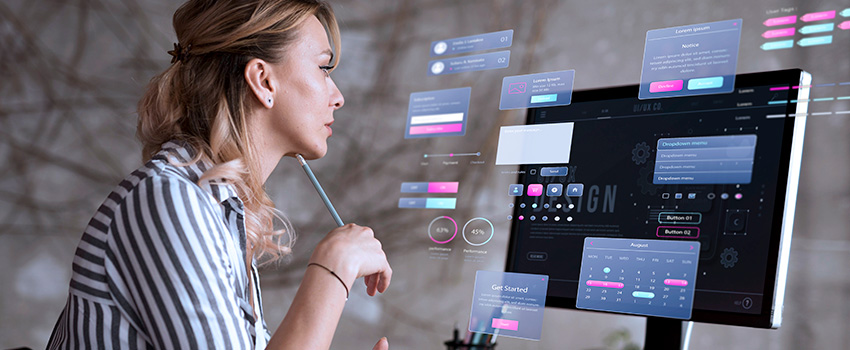As technology constantly evolves and user criteria change, one of the patterns that remain in new and modern UI/UX design is the use of dark mode. By 2025, dark mode isn’t setting the tone; it’s a given and a feature that significantly enhances the user experience. At Base Creative, we delve into more detail on how to improve usability, reduce eye strain, and establish a sleek, modern look based on the latest digital standards.

Why Dark Mode Matters in 2025
People are spending more time on their computers now than ever before. Eye-friendly interfaces are in high demand as people spend more time in front of screens. Dark mode responds to this demand by:
- Minimizing reflection at night or low light.
- Reducing blue light (good for people who are browsing at night)
- Improved readability when combined with high-contrast typography
- Better device battery life, particularly on OLED and AMOLED displays
By 2025, dark mode has transitioned from a design statement to a user expectation on websites, apps, and digital products.
Key Benefits of Dark Mode for UX
- Improved Visual Comfort: Darker backgrounds draw less power from the screen, and therefore, content is more comfortable to view in low ambient lighting. This is great, particularly for mobile-first browsing at night.
- Focus and Clarity: Properly executed, dark mode can help highlight important content and CTA’s by minimizing distractions. This is very useful in ‘minimalist’ UI design approaches.
- Accessibility Improvements: The dark mode option, in particular, could make websites more accessible to people with visual impairments or those who are sensitive to light. Together with custom options, it supports a more inclusive web.
- Modern Aesthetic Appeal: Its smooth, dark interface looks modern and cool—two highly marketable qualities in the eyes of trendy tech users and forward-thinking companies.
Designing Effective Dark Mode Experiences
Here at Base Creative, we take a user-first approach to dark mode design. So, how do we create a smooth dark mode UX?
- High-contrast ratios: Ideal for compliance with WCAG standards and ensuring a clear distinction between text & background.
- Color palettes for thought: Don’t use black; use darker grays and muted tones, and add accent colors that are more visually appealing.
- Branding: Ensure branding stays true while colors work well on dark backgrounds.
- Toggle Options: Provide an option for users to quickly switch between light and dark mode while honoring their system or app settings.
- Cross-Device Testing: Evaluating a product’s appearance and functionality across various devices and platforms.
Looking Ahead: The Future of Dark Mode
In 2025 and beyond, dark mode will become increasingly dynamic as it leverages AI and machine learning to adapt lighting according to the environment and individual habits. We also hope that voice interfaces, AR/VR platforms, and accessibility-first design frameworks will gain wider adoption.
Final Thoughts
It’s not just a visual theme; dark mode is a fundamental element of contemporary user experience design. Here at Base Creative, we celebrate this evolution by designing intuitive, functional, and beautifully enhanced experiences in dark mode.
If you’re redesigning or launching new digital products in the future, you may want to consider the advantages of dark mode for your UX. And let’s create something that looks terrific — but is even more delightful to use.

